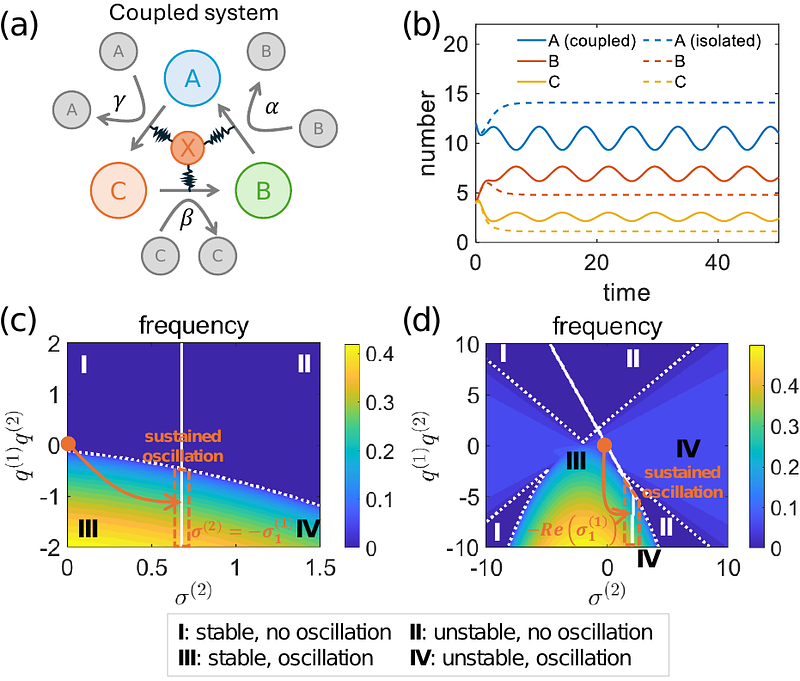From Decay to Rhythm: Sustained Biological Oscillators Require More Than Chemistry Alone

From Decay to Rhythm: Sustained Biological Oscillators Require More Than Chemistry Alone
Wu, Y.; Sun, S.
AbstractMany biological systems exhibit rhythmic oscillatory dynamics, yet it is shown that chemical reaction systems governed by Markovian dynamics cannot generate long-lasting oscillations. To overcome this limitation, we propose a general mechanism that couples a Markovian system to at least one other degree of freedom, such as a mechanical system, to achieve sustained oscillations with a desired frequency. We introduce two approaches, targeting different dynamical modes in the Markovian system, and derive a governing principle for the non-Markovian system by analyzing the eigenvalues of the coupled dynamics. This principle is validated using a trimolecular reaction system, successfully producing sustained oscillations. Our study provides theoretical insights into how any chemical system can be coupled to another non-Markovian system to produce sustained oscillations. We also make a fundamental observation that stability and control of stable limit cycle must arise from the non-Markovian part of the coupled system.